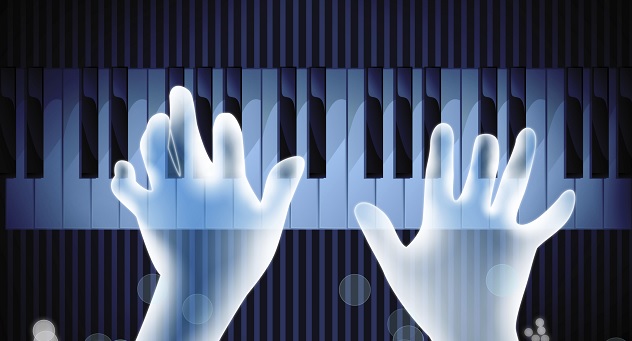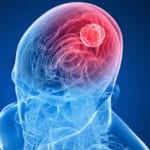 Weird Stuff
Weird Stuff  Weird Stuff
Weird Stuff  Mysteries
Mysteries 10 Tragic Disappearances and Deaths in Joshua Tree National Park
 History
History 10 Ways Childhood Really Sucked in the Old West
 Music
Music 10 Name Origins of Famous Bands from the 1990s
 Religion
Religion 10 Biggest Turnarounds by the Catholic Church
 Weird Stuff
Weird Stuff 10 Unbelievable Times Laws Had Unintended Consequences
 Humans
Humans Ten Historic Women Who Deserve Way More Credit Than They Got
 Movies and TV
Movies and TV 10 Films That Spawned Major Lawsuits
 History
History Ten Times Towns Were Wiped Off the Face of the Earth
 Creepy
Creepy 10 of the Most Disturbingly Haunted Public Houses in the UK
 Weird Stuff
Weird Stuff 10 Niche Subcultures That Are More Popular Than You Might Think
 Mysteries
Mysteries 10 Tragic Disappearances and Deaths in Joshua Tree National Park
 History
History 10 Ways Childhood Really Sucked in the Old West
Who's Behind Listverse?

Jamie Frater
Head Editor
Jamie founded Listverse due to an insatiable desire to share fascinating, obscure, and bizarre facts. He has been a guest speaker on numerous national radio and television stations and is a five time published author.
More About Us Music
Music 10 Name Origins of Famous Bands from the 1990s
 Religion
Religion 10 Biggest Turnarounds by the Catholic Church
 Weird Stuff
Weird Stuff 10 Unbelievable Times Laws Had Unintended Consequences
 Humans
Humans Ten Historic Women Who Deserve Way More Credit Than They Got
 Movies and TV
Movies and TV 10 Films That Spawned Major Lawsuits
 History
History Ten Times Towns Were Wiped Off the Face of the Earth
 Creepy
Creepy 10 of the Most Disturbingly Haunted Public Houses in the UK
10 Bizarre Brain Disorders Often Mistaken For Psychiatric Conditions
In Western countries, there’s been an explosion in neurological diseases—including early-onset dementia—that can’t be explained by longer life spans. It turns out that some brain disorders have such bizarre symptoms that they’re sometimes mistaken for psychiatric conditions.
10Anti-NMDA Receptor Encephalitis

For many patients, anti-NMDA receptor encephalitis—a recently discovered autoimmune disease that causes the brain to swell—initially presents psychiatric symptoms such as hallucinations, violent outbursts, and delusions. Patients appear to be possessed by demons, and most of them will develop seizures and involuntary movements within a few days.
But the neurological symptoms may be subtle and easy to miss. Dr. Souhel Najjar, an anti-NMDA expert, believes that as many as 90 percent of these cases have been misdiagnosed. “There could be people in comas right now, or people stuck in psych wards, that have this disease and aren’t being treated properly,” said Emily Gavigan—an anti-NMDA patient—to CBS Eyewitness News.
One 24-year-old woman, Susannah Cahalan, spent over $1 million in hospital care with top doctors, but they repeatedly misdiagnosed her condition. She had seizures and hallucinations—grunting like an animal, she would kick and punch people. She thought newscasters were discussing her on TV. Then Dr. Najjar entered the scene and asked her to draw a clock face. When she drew all the numbers on one side, Dr. Najjar knew she had inflammation on the right side of her brain. Susannah was treated just in time to save her from a coma and death.
Although Susannah recovered with no brain damage, not everyone is so lucky. Even with treatment, approximately 7 percent of patients die, and others are left with mild to severe brain damage. Anti-NMDA can be treated with immunotherapy, but there’s no cure—only remission. A relapse requires more treatment.
Anti-NMDA has spurred Dr. Najjar to investigate other presumed psychiatric illnesses—such as bipolar disease, depression, obsessive-compulsive disorder, and schizophrenia—to see if they, too, are actually physical illnesses caused by inflammation of the brain.
9Othello Syndrome

Othello syndrome (OS) is named after the Shakespearean character Othello, who killed his wife, Desdemona, because he believed that she was having an affair. OS patients develop the same stubborn delusions of suspicion and jealousy toward their spouses and constantly accuse them of infidelity. Some patients even have hallucinations of their spouse having sex with someone else.
OS usually begins around age 68, with about 77 percent of patients having a neurological disease affecting one of the brain’s frontal lobes—usually the right one. Sometimes, OS is brought on by the use of dopamine therapy for Parkinson’s disease. If that’s the cause, then reducing or stopping the medication may alleviate the symptoms of OS.
In Lewy body dementia (LBD), the symptoms of OS may continue (or even start) after the death of a spouse. LBD includes Parkinson’s disease and dementia caused by protein deposits—called Lewy bodies—in the nerve cells of your brain.
One 42-year-old man, who was being treated with dopamine agonists for Parkinson’s, began to insist on having frequent sex with his wife. Accusing her of infidelity, he obsessively stared at his driveway because he was convinced that a fictional lover was going to pick her up and have sex with her somewhere else. He lost thousands of dollars to sudden gambling impulses and couldn’t control his spending habit, either.
Also like Othello, OS patients can become dangerously violent. Men with OS have tried to strangle their wives or start fights with neighborhood men suspected of being their wives’ lovers.
8Sensory Desynchronization

“PH”—a retired pilot in his sixties—was the first confirmed patient with sensory desynchronization, where a person hears voices before people speak. For PH, life is like watching a movie with the sound and picture out of sync. He even hears his own voice before he feels his mouth move. Brain scans revealed one lesion in his midbrain and another in his brain stem. Both of these parts are associated with hearing, movement, and timing.
Scientists believe our brains process sight and sound at different rates to compensate for the different speeds at which light and sound travel. For most of us, our brains do the work when syncing voices with lip movement. But for PH, there’s now a quarter-second delay between hearing a voice and seeing someone’s mouth move. To sync them up, scientists played clips of people whose voice sounded 210 milliseconds before their lips moved.
No one knows how the human brain is able to unify our perceptions of sight and sound. But it does mean that each of us has more than one clock in our brain. If these clocks don’t work together correctly, the soundtrack to our lives may go out of sync with our visual reality.
7Ecstatic Epileptic Seizures

An ecstatic epileptic seizure—or ecstatic aura if it occurs in the first moments of a seizure—was described by the famous epileptic novelist, Fyodor Dostoevsky: “I would experience such joy as would be inconceivable in ordinary life . . . I would feel the most complete harmony in myself and in the whole world and this feeling was so strong and sweet that for a few seconds of such bliss I would give 10 or more years of my life, even my whole life perhaps.”
A 53-year-old female teacher described her ecstatic seizure by saying, “The feeling was almost out of this world. This led to a feeling of complete serenity, total peace, no worries; it felt beautiful, everything was great . . . Maybe the closest sensation that I know would be an orgasm, but what I felt was not at all sexual . . . it was almost religious.” She went on to say that she no longer fears death and sees the world more vibrantly than she did before.
Some scientists believe ecstatic seizures explain what happens during near-death experiences. No one knows for sure what’s going on there, but researchers do know that ecstatic seizures only happen to about 1–2 percent of temporal lobe epilepsy patients. All these patients report a heightened sense of well-being and enhanced self-awareness. Some also report holding on to a moment in time, feeling serene and blissful yet sometimes overloaded by the intensity of what’s happening.
Often, these seizures start in one of the brain’s temporal lobes. Some neurologists believe that the insular cortex—which is under the temporal lobe—is really where the activity occurs. Unlike the temporal lobes, the anterior insula is supposed to be linked to our feelings—both good and bad.
6Misophonia

Sufferers of misophonia fly into rages at small noises that most of us disregard or don’t notice: gum chewing, soup slurping, and soft footsteps, among others. Their hearts pound, their fists clench, and their bodies seem to explode with uncontrollable fury or anxiety. Unlike hyperacusis patients—who perceive all sounds as unbearably loud—misophonia patients are fine with loud noises. It’s the soft ones they can’t stand.
Misophonia usually starts during late childhood or in the early teenage years. Over time, the condition gets worse and patients acquire more trigger sounds—even breathing can set some people off. Sufferers don’t outgrow the condition. As a patient named Adah Siganoff said, “It’s all about the reaction. The rage. The anger. Not being able to stop it. For people with this disorder, the sound is like 200 people pulling their fingernails down a chalkboard at the same time. It’s that same intensity and it’s very overwhelming.”
Many of these patients have been misdiagnosed with psychiatric conditions, including post-traumatic stress disorder. But some doctors are beginning to recognize misophonia as a neurological disease that may be caused by faulty brain wiring in the area that causes emotions. Many other doctors still don’t believe in misophonia—for now, treatment options are limited and largely ineffective. Most patients have to cope as best they can by eating alone or by releasing tension through screaming. Some people use earplugs to block out the sounds.
5Developmental Topographical Disorientation

Imagine getting lost every day—even in your own home—and you may have some idea how Sharon Roseman of Littleton, Colorado feels. Now in her sixties, Sharon has struggled with developmental topographical disorientation (DTD) since she was five years old. DTD is a rare neurological illness that leaves a person unable to orient herself or navigate anywhere. When Sharon couldn’t recognize her house as a little girl, her mother warned, “Don’t tell anybody because they’ll say you’re a witch and they’ll burn you.”
Sharon complied, not even telling her husband about her condition. It got so bad that she would have trouble finding her children at night when they cried. When she drives a car, curved streets and angles leave her disorientated as do oceans, lakes, and swimming pools. As Sharon described the experience, “It’s almost as if somebody picks up the entire world, turns it, and sets it back down.”
When Sharon first sought medical help at age 29, she saw a psychologist. But he couldn’t treat her disorientation. She was later told she might have a brain tumor or possibly epilepsy. This, too, turned out to be false. Then she met Guiseppe Iaria, a neuroscience professor at the University of Calgary. Dr. Iaria had published the first paper about DTD in 2008, and thus he knew exactly what Sharon was going through.
Doctors aren’t sure exactly what happens to a DTD patient’s brain. Scans don’t reveal any atrophied or shriveled areas. But Jeffrey Taube, a professor from Dartmouth College, believes that the mapping processes in different areas of a DTD brain aren’t communicating with each other properly, and that their internal compasses have short-circuited.
Currently, there’s no cure for DTD. Until then, Sharon is simply relieved that she can finally explain her condition to others without being called crazy or a witch.
4Musical Hallucinations

A woman simply identified as “Sylvia” heard a piano playing outside her house one day. But there was no piano—Sylvia was actually experiencing a musical hallucination. These sound real enough to convince the patient that a live band or choir is in an adjoining room. Over time, Sylvia’s hallucinations became almost constant, featuring long melodies from classical composers like Rachmaninoff.
Psychiatric conditions like depression, obsessive-compulsive disorder, and schizophrenia can cause musical hallucinations. But in most cases, it’s not psychosis. It’s simply an older person with a hearing impairment whose brain incorrectly predicts what they’re hearing. At least, that’s the theory of doctors who’ve studied Sylvia and other patients like her.
Sylvia eventually discovered that listening to real music would briefly stop the hallucinations. By imaging her brain both when live music was playing and when it was not, doctors were able to identify which regions showed stronger activity as the hallucinations got louder. Based on these studies, doctors now believe that our brains only hear one actual note or chord. It will then predict the following notes based on past experience. If our brains predict incorrectly, the next actual sound will cause our brains to make an entirely new prediction to minimize errors.
When someone has a hearing impairment, the brain receives fewer sound inputs and makes more prediction errors. As the mistakes increase in number, they begin to feel and sound very real to the patient. Doctors believe patients are most likely to hallucinate music because it’s organized and thus easier for the brain to predict than random noise.
3Huntington’s Disease

Caused by a mutation in the Huntingtin gene, Huntington’s disease (HD) is a rare inherited disorder that breaks down nerve cells in the brain over time, affecting a patient’s behavior and movement. Musician Woody Guthrie died of the disease after being misdiagnosed for years. So far, there is no cure.
Some people, like Katharine Moser, get tested young to find out if they have the genetic defect that causes HD—which usually doesn’t manifest until middle age. Sadly, many HD patients are afraid to admit they have the disease—both because they don’t want to face it and because they’re afraid of discrimination in the workplace and elsewhere. As Ms. Moser’s mother said, “Nobody has compassion. People look at you like you’re strange, and ‘What’s wrong with you?’ ”
Katharine Moser had seen the ravages of the disease on her grandfather when she was younger. His body jerked involuntarily, and he would have violent outbursts. One time, he entered the kitchen without any clothes on except for the underwear on his head.
In its early stages, HD symptoms vary among patients. Generally, though, the younger the patient when symptoms begin, the faster HD progresses. Mood swings are an early symptom. The HD sufferer may become depressed, irritable, apathetic, or angry. HD may also impact a person’s memory, judgment, and learning ability. Over time, their intellect will be increasingly affected.
For other patients, the first signs are uncontrollable movements in the face, feet, fingers, or trunk. There may also be balance or clumsiness problems. Over time, basic functions such as eating, speaking, and walking will decline. For now, death is the inevitable outcome.
2Frontotemporal Dementia

While Alzheimer’s begins with memory loss that later gives way to behavioral problems, Frontotemporal dementia (FTD) does just the opposite. By first killing nerve cells in the frontal lobes, FTD begins with behavioral problems. Then, as the damage spreads around the brain, the patient’s memory fades. Over time, Alzheimer’s and FTD present almost exactly the same way.
FTD often strikes victims 45–65 years old—younger than Alzheimer’s usually does. The behavioral variant known as bvFTD has early symptoms that mimic psychiatric conditions the most. Physically, FTD results in atrophy of the frontal and temporal lobes of the brain. But as with all forms of dementia, it robs its victims of their lives, loves, and dignity. As one family member said, “Being a caregiver in this disease is a grieving process while the person is still alive.”
Barbara Whitmarsh, a former scientist at the National Institutes of Health, was married for three decades and had six children with her husband, John. Eventually, though, John noticed severe changes in his wife that were caused by her FTD. He said, “Her ability to feel empathy, her personality, it just disappeared over a period of time.” She also gained 15 kilograms (30 lb) in one year.
With bvFTD, patients may develop abnormal appetites for sweets. They’re also prone to violent outbursts, loss of inhibitions, and poor emotional judgment. They can become hyperactive, hypersexual, and impulsive. But perhaps the hardest symptom for families to cope with is the patient’s loss of feeling for the people around them. What’s worse—FTD patients typically don’t recognize the changes in their behavior.
Barbara Whitmarsh no longer recognizes her family members and speaks only rarely. She’s been confined to a locked nursing home, where she never stops moving.
1McLeod Syndrome

Caused by an inherited mutation in the XK gene, McLeod syndrome is a neurological disease that typically starts in midlife and only affects about 150 men in the world. Half the patients have seizures, while other symptoms include muscle weakness and atrophy, involuntary jerking of the legs and arms, grimacing, and vocalizations like grunting and mental deterioration.
But it’s the odd changes in behavior that may cause doctors to mistake McLeod syndrome for a psychiatric disease. Some of the early symptoms are depression, anxiety, and severe emotional instability—including a lack of self-restraint. There is no cure, but treatments can address symptoms.
According to Southern Methodist University researchers, McLeod syndrome may have been the real reason King Henry VIII of England beheaded two of his six wives. Initially, Henry VIII was strong, athletic, and generous. At around 40 years of age, he began to experience weakness and atrophy in his legs that eventually caused immobility. He also descended into psychotic paranoia, ultimately beheading his wives.
McLeod syndrome is specific to the Kell blood group, which may also explain the difficult pregnancies of Henry VIII’s wives and mistresses. They were pregnant with at least 11 of his children, but only four lived past infancy. If Henry VIII carried the Kell antigen in his blood, and his women didn’t, then they would only be able to have a healthy first child before losing every one thereafter.
+Alien Hand Syndrome

The corpus callosum is a band of nerve fibers that lets the right and left hemispheres of the brain communicate with each other. Sometimes, a surgeon must cut the callosum of an epilepsy patient’s brain in order to help stop seizures. Most patients recover normally from this procedure. But some end up with the two halves of their brain operating independently of one another. Quite possibly, they’ll end up waging war on each other, like an alien has taken control of one side of the body. This, appropriately enough, is known as alien hand syndrome (AHS).
Nobel prize-winning scientist Roger Sperry filmed an AHS patient arranging blocks to match a pattern on a picture. The patient’s left hand—which was controlled by the right half of the brain—did a good job. The right hand, though, couldn’t do it. What’s more—when the left hand attempted to help the right, they started fighting with each other like a couple of squabbling kids.
Karen Byrne’s epilepsy was cured by cutting her corpus callosum. But one day, her doctor noticed her left hand was opening her shirt buttons with Karen being completely unaware of it. After rebuttoning her shirt with her right hand, her left hand began to undress her again.
Sometimes, an alien hand will punch or slap the patient. Or, if a patient’s legs decide to go in different directions, that person will end up walking around in circles as the two brain halves engage in a power struggle. Luckily, Karen’s doctors have finally found a way to control her symptoms with medication.








